
Friend Theory Web
The web application of Friend Theory, a start-up I co-founded: a social travel platform, leveraging friends of friends to get a better travel experience anywhere in the world
2017-2019
Company : Friend Theory
Technologies : Docker, Java, MySQL, Neo4J, HTML, CSS, JavaScript, AWS
Frameworks : Spring Boot, Hibernate, VueJS
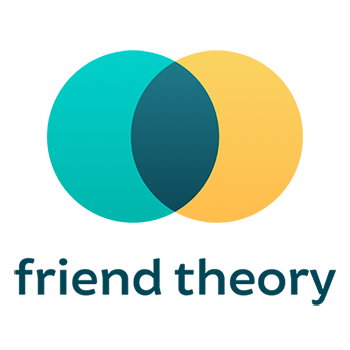
In 2017, I co-founded Friend Theory in Melbourne, Australia with 2 friends from Spain, Carlo Spada and Carlos Costa. Friend Theory was a travel application that leveraged the users existing social networks in order to find and connect with direct friends and friends of friends anywhere in the world.
The original purpose of this was to facilitate travel, even for people who did not have an extensive network of friends overseas by extending to their second circle of friends. It was articulated around 4 main type of sharing and help: tips & advice, just meeting up, offering services, and accomodation.

Friend Theory web app mockup, after the 2018 redesign
Initially, we decided to build a web app, so it could be available to everyone easily, and be able to deliver quick updates to our app with minimal overhead.
I worked on the architecture and design of this web app in order to build an MVP as soon as possible and let Carlos test out the potential of the app. It quickly grew organically to a few thousand users
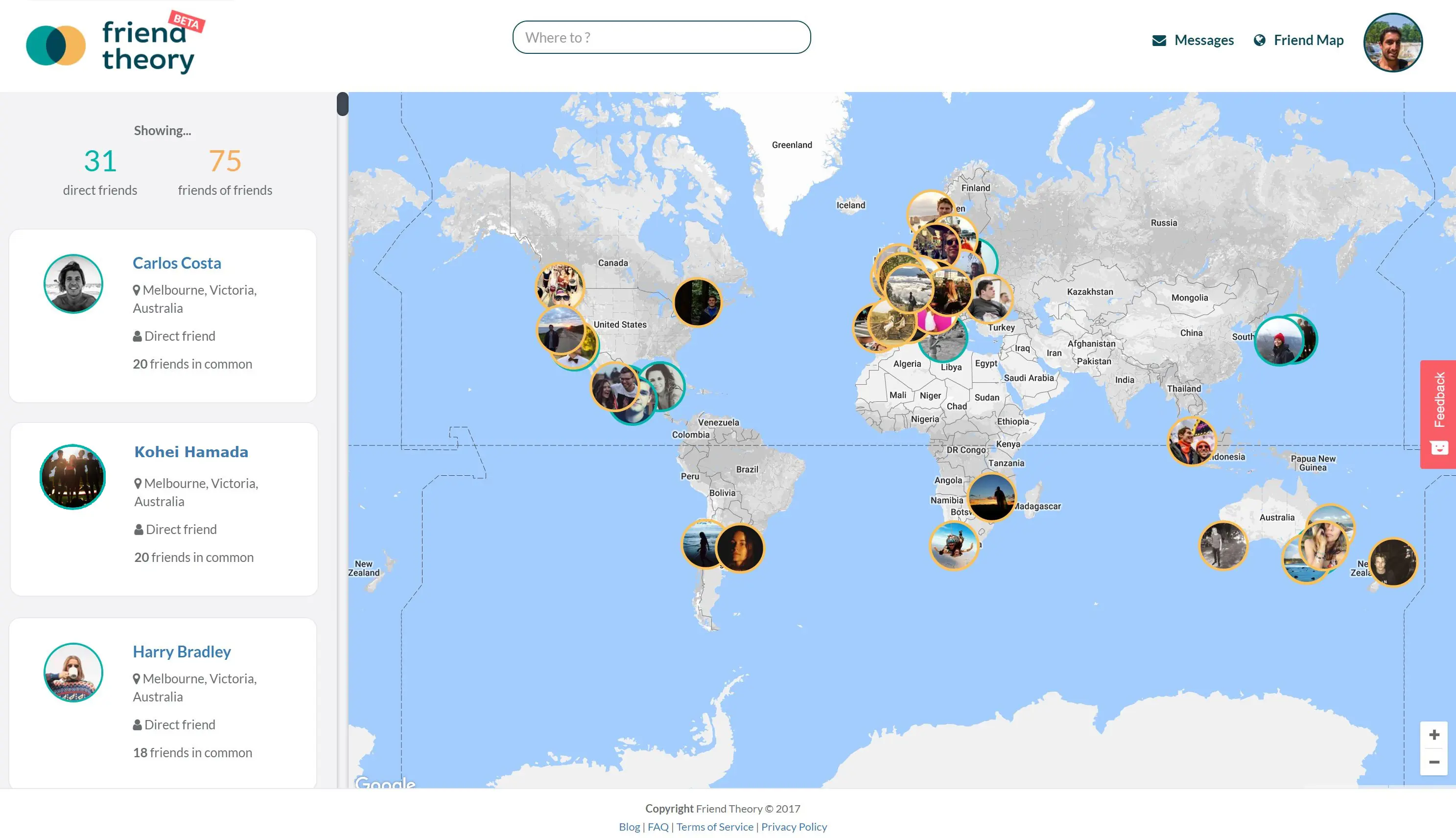
The very first version of Friend Theory released in beta for users to try (2017)
Since the users would often be on the go, I took care from the very beginning to make a website UI that would be 100% responsive and mobile-friendly. We quickly iterated in an agile way to gather users feedback and improve the app.
At this point we were still 100% bootstraping this project, working from a storage room at university and keeping our expenses to pretty much $0.
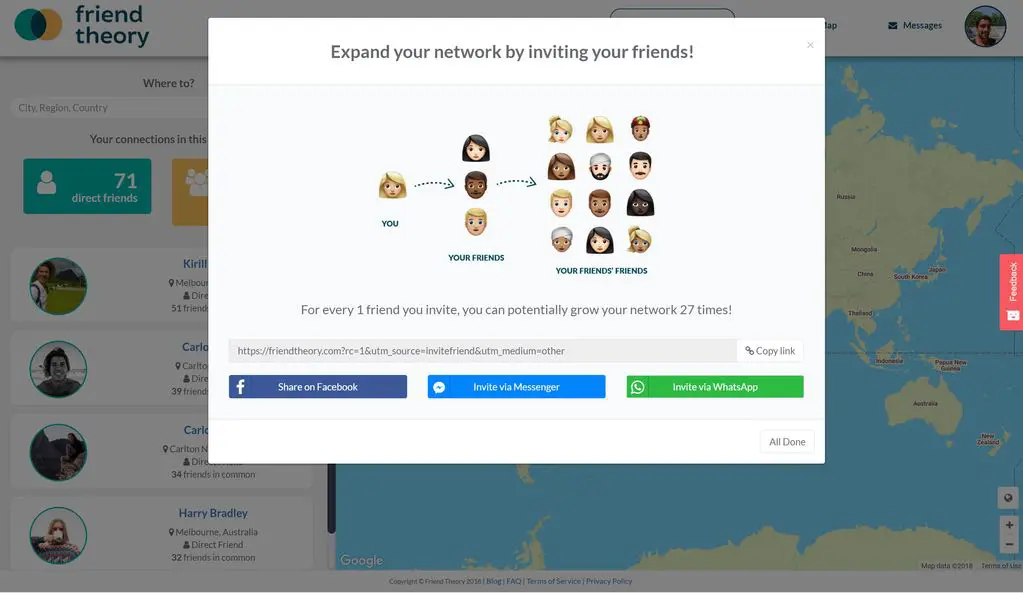
Friend Theory explanation of the potential of your network

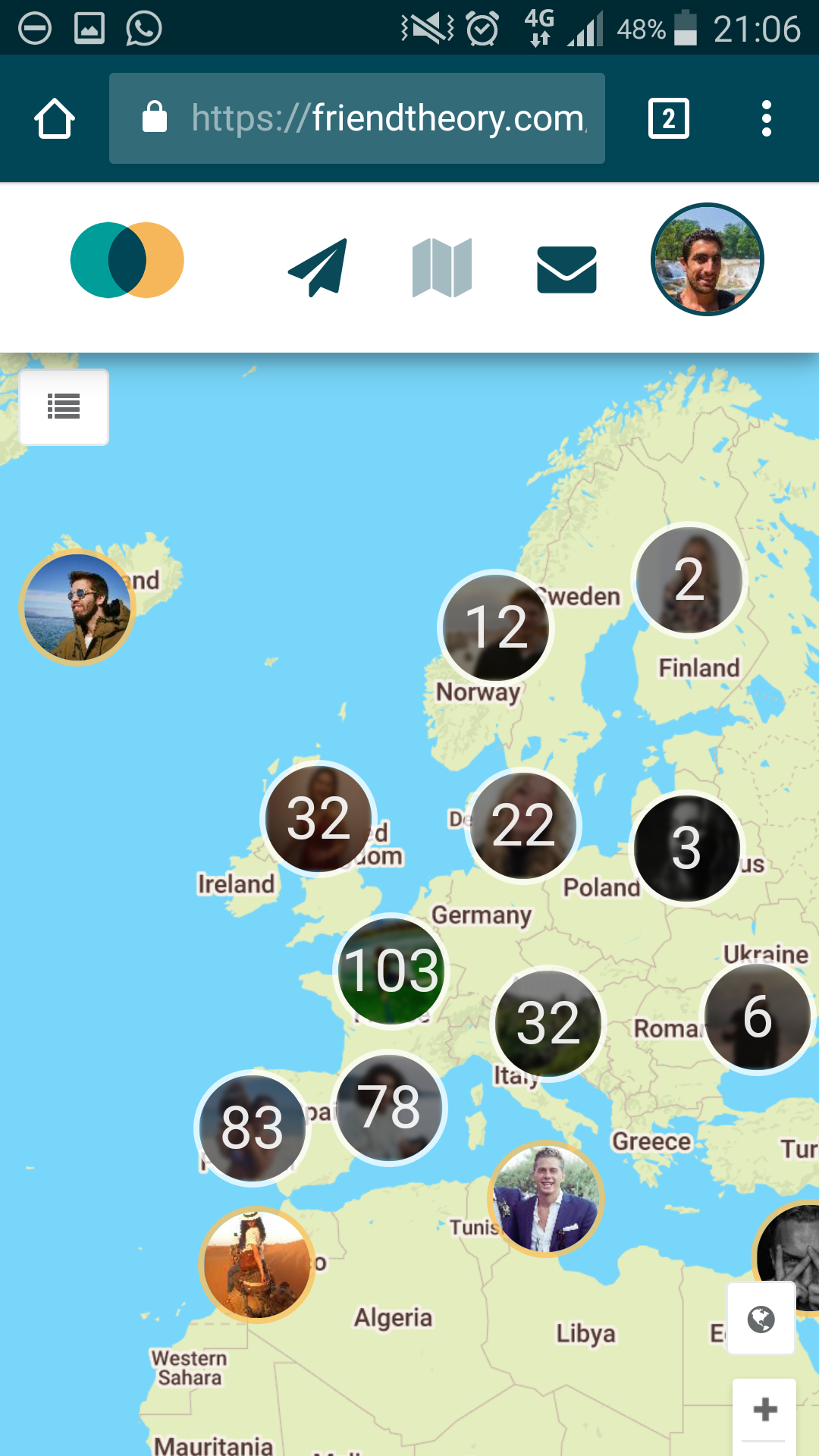
Mobile view of the Friend Theory app, with clusters (2017)
Technology wise, I used VueJS on the front-end, Java with Spring framework in the back-end. The choice to store the data was a dual-database : a Neo4J graph database to represent the connections between people, locations, topics of interests, events, etc. and a MySQL relational database for for traditionnal stuff (authentication, profiles, messaging and notification system, etc.).
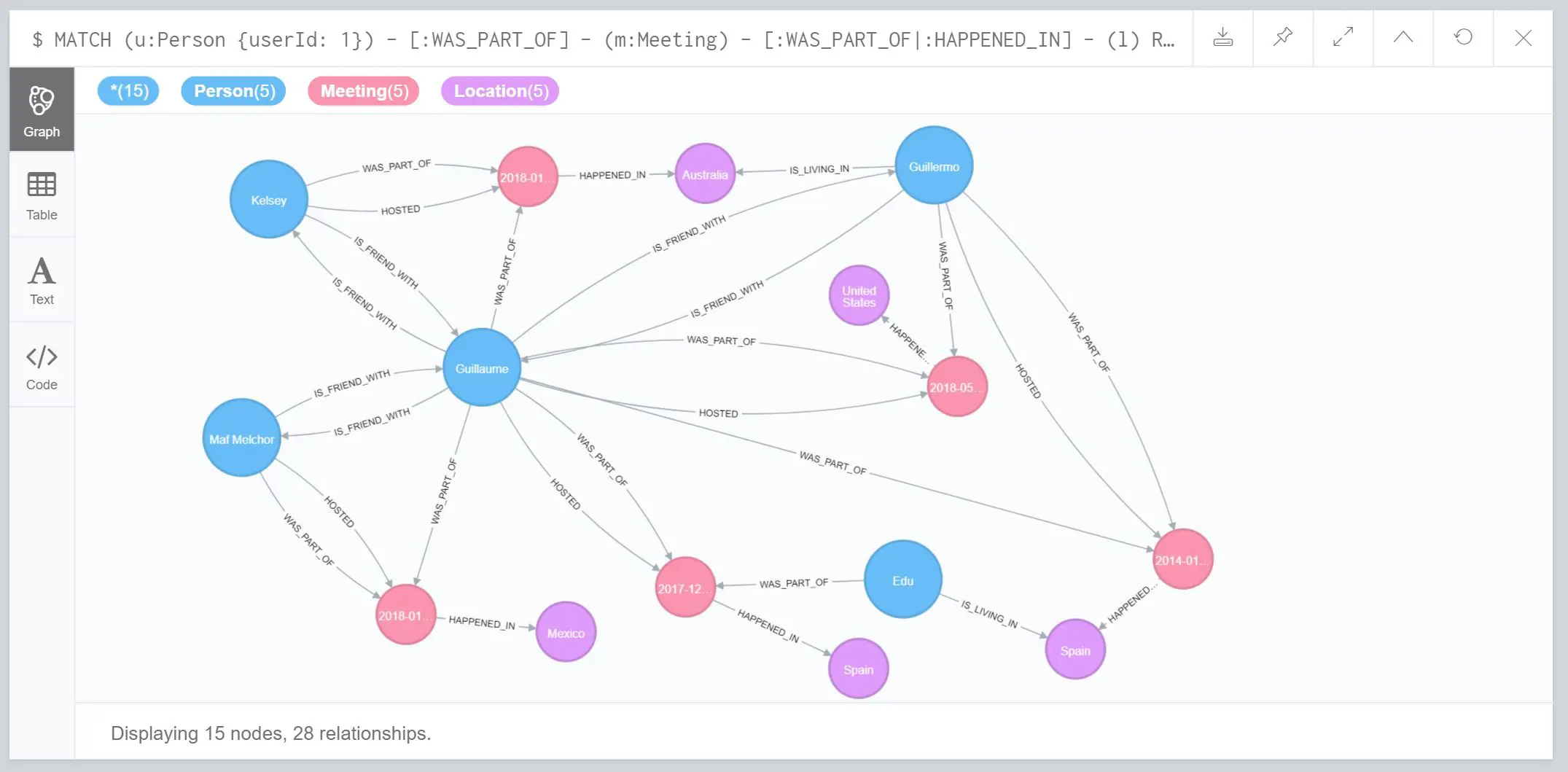
Friend Theory graph database
There was some technical challenges in getting both databases to remain in sync as more fetures were added and the complexity of the app grew. But all in all, it was very effective and scalable.
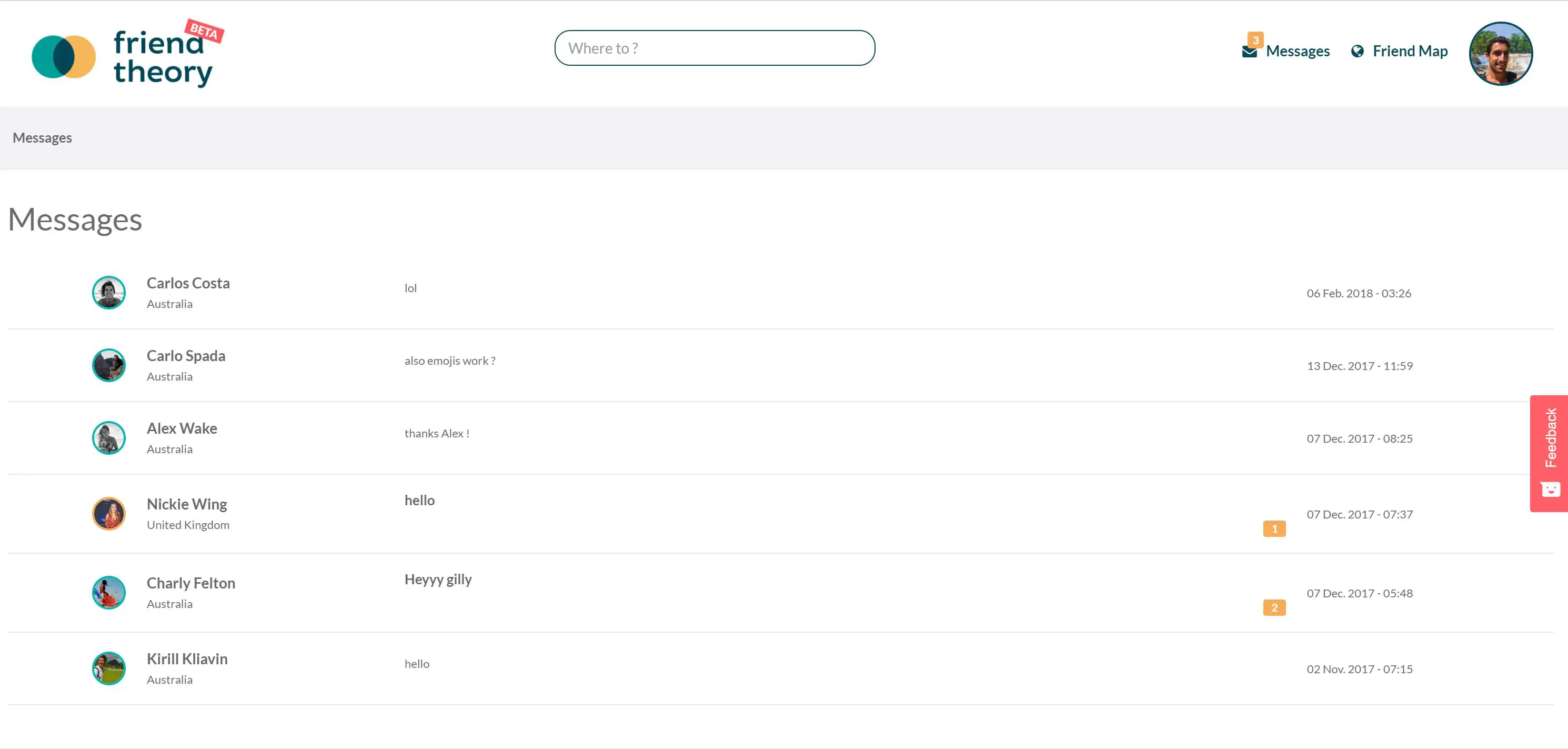
Friend Theory messaging MVP (2017)
After getting about 20k signups from more than 130 countries in a few weeks, we went on to raise a pre-seed round of funding for Friend Theory. This allowed us to hire another developer Guillermo and a designer Elise, and move to a proper co-working space. From there, built more features, fixed many bugs and issues, and worked on an upgrade of the UI involving a REAL graphic designer.
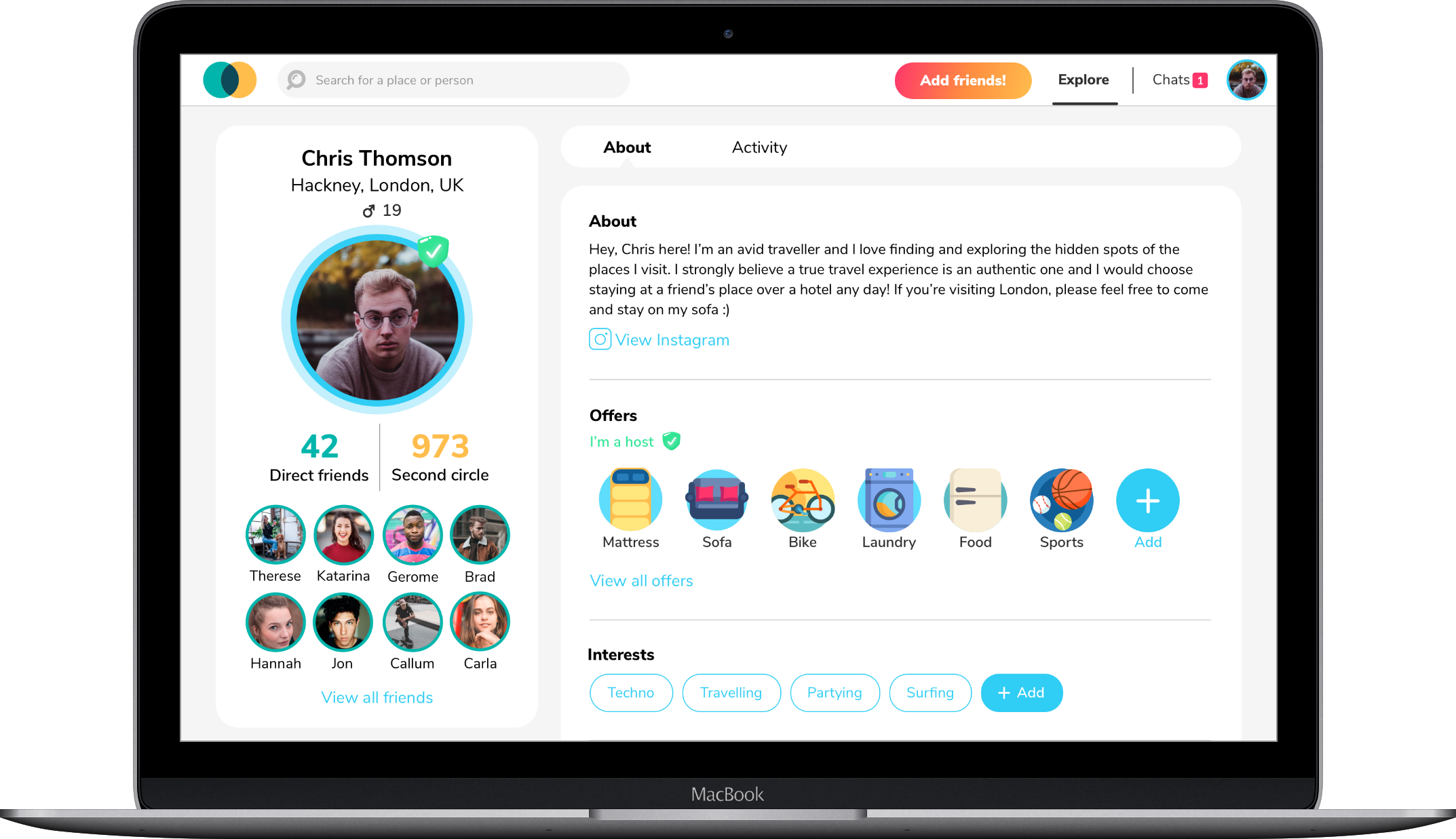
Friend Theory profiles after design improvements (2018)
The Friend Theory website is still up and running today, even if the app is not : https://friendtheory.com
The rest of the story of my first start-up business is detailed in the other projects : Friend Theory Mobile App, and Nido.
#startup #software #architecture #dev #java #spring #docker #web